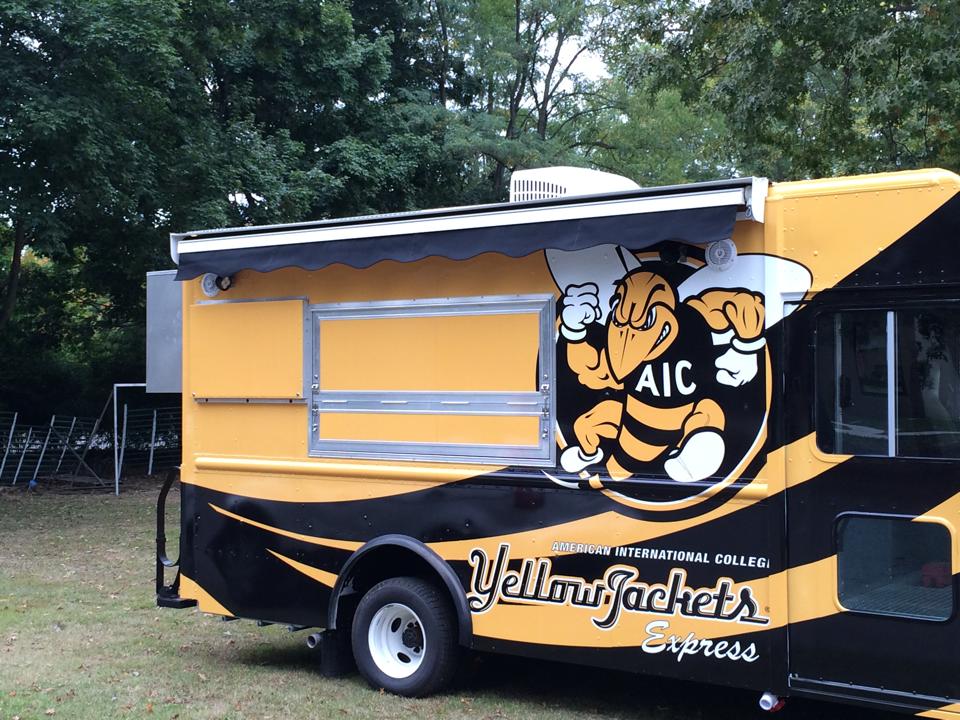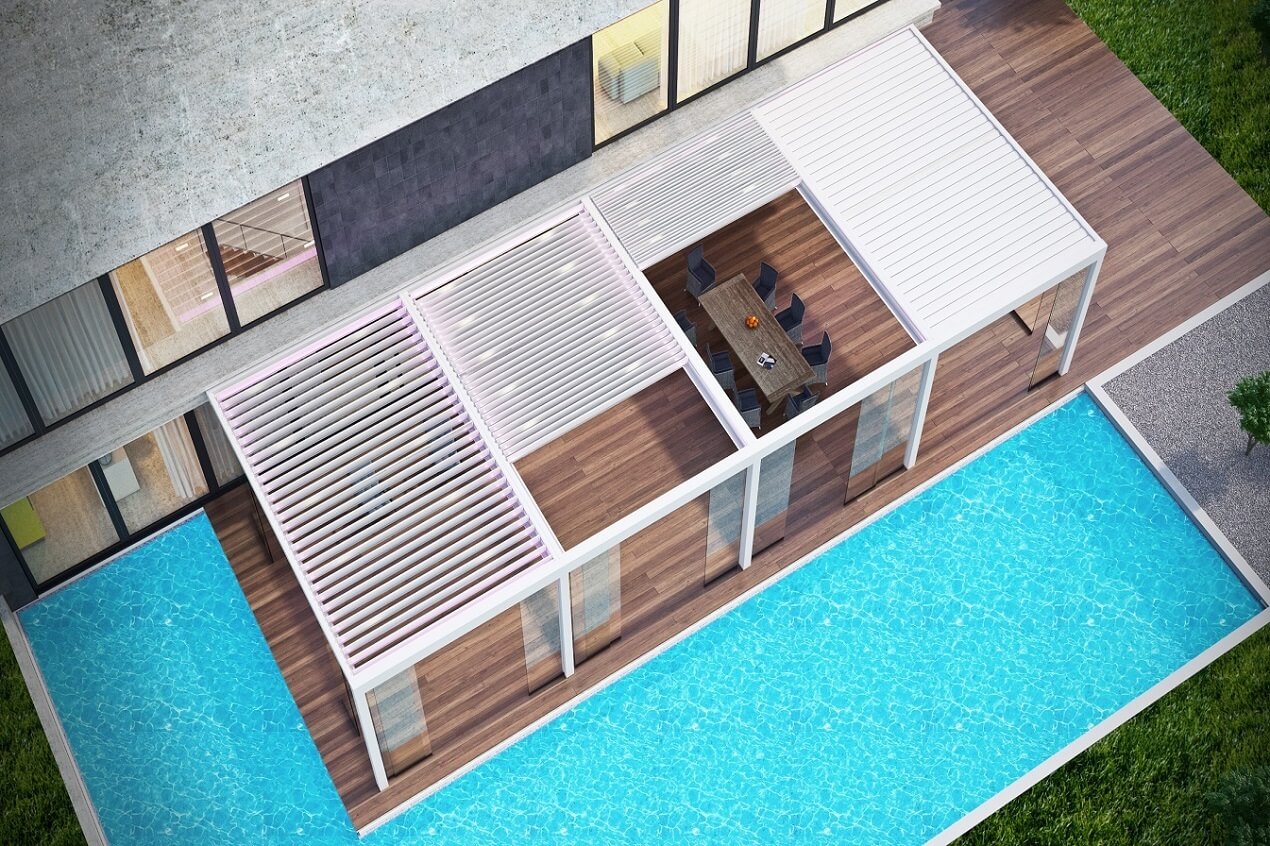Retractable Awnings For Food Trucks: Extending Your Brand, Comfort, and Reach pickup.truckstrend.com
In the bustling world of mobile gastronomy, where every square foot counts and first impressions are everything, food trucks stand as vibrant culinary beacons. Yet, even the most delicious offerings can be overshadowed by relentless sun, sudden downpours, or a lack of inviting space. This is where the unsung hero of the food truck industry steps in: the retractable awning. Far more than just a shade provider, a retractable awning for a food truck is a dynamic, multi-functional asset that enhances customer experience, protects your operations, and extends your brand visibility.
This comprehensive guide will delve into every facet of retractable awnings for food trucks, from their fundamental benefits and diverse types to crucial selection criteria, installation nuances, and maintenance tips. Whether you’re a seasoned food truck veteran looking to upgrade or a budding entrepreneur planning your mobile culinary empire, understanding the power of a well-chosen retractable awning is paramount to your success.
Retractable Awnings For Food Trucks: Extending Your Brand, Comfort, and Reach
I. Why Retractable Awnings Are Essential for Food Trucks
A retractable awning isn’t merely an accessory; it’s an integral component of a successful food truck operation. Its benefits span customer comfort, operational efficiency, and powerful branding.
- Weather Protection & Customer Comfort: The most obvious, yet perhaps most critical, benefit is protection from the elements. On a scorching summer day, an awning offers a cool, shaded reprieve for customers waiting in line, encouraging them to stay longer and order more. During an unexpected rain shower, it provides shelter, preventing customers from fleeing and keeping your queue intact. This enhanced comfort directly translates to a more positive customer experience and increased sales.
- Enhanced Brand Visibility & Appeal: An awning dramatically increases your truck’s footprint and visual presence. With custom colors, bold logos, and engaging graphics, your awning becomes a highly visible billboard, drawing eyes from a distance and reinforcing your brand identity. It transforms your truck from a mere vehicle into a distinct, inviting storefront.
- Operational Benefits & Food Safety: For your staff, an awning provides much-needed shade, reducing heat stress and improving working conditions, especially during peak hours. It also offers a degree of protection for your serving window and counter space, keeping direct sun off food items and preventing rain from splashing into preparation areas, thereby contributing to better food safety and hygiene.
- Versatility and Adaptability: Unlike fixed structures, a retractable awning offers unparalleled flexibility. You can deploy it fully, partially, or retract it completely based on weather conditions, crowd density, or spatial restrictions at different event locations. This adaptability ensures your truck is always optimized for the environment.
- Defining a Service Area: An awning subtly defines your serving zone, creating an implied "waiting area" that helps manage customer flow and gives your setup a more professional, established feel.

II. Types of Retractable Awnings for Food Trucks
The world of retractable awnings offers various options, each with distinct features suitable for different needs and budgets.

-
Operation Mechanism:
- Manual Awnings: Operated by a hand crank, these are generally more affordable and reliable due to fewer moving parts. They are a good choice for smaller trucks or those on a tighter budget, though they require physical effort to deploy and retract.
- Motorized Awnings: Equipped with an electric motor, these can be extended or retracted with the push of a button, a remote control, or even a smartphone app. Some advanced models include wind and sun sensors that automatically retract or extend the awning based on weather conditions. While more expensive, they offer unparalleled convenience and often a sleeker appearance.

-
Frame Styles:
- Lateral Arm Awnings: The most common type, these feature two or more folding arms that extend horizontally from a torsion bar, pushing the fabric out. They offer unobstructed space underneath, making them ideal for covering serving areas or customer queues.
- Drop Arm Awnings: These have arms that drop down at an angle, providing shade and privacy. While less common for the main serving area of a food truck, they can be useful for side windows or smaller sections.
- Canopy/Cassette Awnings: These are more compact when retracted, with the fabric and sometimes the arms enclosed in a protective cassette, offering superior protection from dirt and weather when not in use. They tend to be more expensive but offer greater longevity and a cleaner look.
-
Fabric Types:
- Acrylic: A popular choice due to its vibrant, fade-resistant colors, breathability, and excellent water repellency (though not fully waterproof). It’s resistant to mold and mildew and offers good UV protection.
- Vinyl (PVC Coated Polyester): Highly durable, waterproof, and easy to clean. It’s an excellent choice for heavy-duty use or areas with frequent rain. However, it’s less breathable than acrylic and can sometimes feel hotter underneath.
- Mesh: While not offering full rain protection, mesh fabrics provide significant shade and allow air circulation, preventing heat buildup. They are often used for secondary awnings or side panels.
-
Mounting Options:
- Wall/Side Mount: The most common for food trucks, where the awning is securely bolted to the side of the truck body. Requires careful consideration of the truck’s structural integrity.
- Roof Mount: Less common but possible for certain truck designs, where the awning is mounted to the roof. Requires robust roof reinforcement.
- Custom Frame/Freestanding: For larger setups or those wanting to extend the shaded area significantly beyond the truck, a custom-built frame that supports the awning can be employed, though this adds complexity and setup time.
III. Key Features and Considerations When Choosing an Awning
Selecting the right awning involves a careful balance of practical needs, aesthetic preferences, and budget constraints.
- Size and Projection: Measure your truck’s side and determine the ideal projection needed to cover your serving area and provide adequate customer space. Too small, and it’s ineffective; too large, and it might pose logistical challenges or exceed local regulations.
- Durability and Materials:
- Frame: Look for robust materials like powder-coated aluminum (lightweight, rust-resistant) or stainless steel (very strong, but heavier).
- Hardware: Ensure all bolts, screws, and moving parts are made of corrosion-resistant materials like stainless steel or marine-grade aluminum.
- Fabric: As discussed, choose based on weather conditions, desired lifespan, and maintenance commitment. Look for fabrics with high denier counts for strength and solution-dyed fibers for fade resistance.
- Ease of Operation: Decide between manual (cost-effective, reliable) and motorized (convenient, potentially more features like sensors). Consider the speed of deployment and retraction.
- Mounting and Installation: This is critical. Food truck bodies vary significantly in construction. Professional installation is highly recommended to ensure the awning is securely mounted to the truck’s frame, not just the outer skin, preventing damage to both the awning and the truck. Discuss the structural requirements with your installer.
- Wind Resistance: Food trucks operate in diverse environments. Awnings are vulnerable to wind. Look for models with strong frames and consider wind sensors for motorized versions, which automatically retract the awning when wind speeds become too high. Always retract your awning in high winds or when unattended.
- Aesthetics and Branding: Your awning is a key part of your truck’s identity. Choose colors that match or complement your brand. Most manufacturers offer custom printing services for logos, slogans, and graphics, turning your awning into a powerful marketing tool.
- Local Regulations and Permits: Before purchasing, check local city ordinances regarding mobile vendor setups. Some areas have restrictions on awning size, projection, or require specific permits for their use, especially in public spaces or at events.
IV. Installation and Maintenance Guide
Proper installation and diligent maintenance are crucial for the longevity and performance of your retractable awning.
Installation:
While some may consider DIY, professional installation is strongly advised for food truck awnings.
- Pre-Installation Assessment: A professional installer will assess your truck’s structure, identify suitable mounting points (usually the frame or reinforced sections), and ensure there’s adequate clearance for the awning’s operation.
- Mounting Brackets: Heavy-duty, custom-fabricated brackets may be required to securely attach the awning to the truck’s frame, distributing the weight evenly.
- Awning Assembly: The awning unit (torsion bar, arms, fabric roller) is then attached to these brackets.
- Wiring (for Motorized): If motorized, electrical wiring will be run from the truck’s power system (or a dedicated battery) to the motor, often requiring professional electrical work.
- Testing and Adjustments: The awning will be tested for smooth operation, proper pitch (to allow water runoff), and secure retraction.
Routine Maintenance:
- Regular Cleaning: Keep the fabric clean to prevent mold, mildew, and stubborn stains. Use a soft brush or sponge with mild soap and water. Rinse thoroughly. Avoid harsh chemicals or pressure washers, which can damage the fabric’s protective coating.
- Lubrication: Periodically lubricate moving parts (arms, hinges, gears) with a silicone-based spray to ensure smooth operation and prevent squeaking.
- Inspection: Regularly inspect the frame, arms, fabric, and mounting hardware for any signs of wear, rust, loose bolts, or damage. Address small issues before they become major problems.
- Retract When Not in Use: Always retract your awning when your truck is parked, unattended, or during adverse weather conditions (high winds, heavy rain, snow). This significantly extends its lifespan.
- Winterization: If operating in cold climates, consider retracting and securely covering the awning for the winter months to protect it from snow and ice damage.
V. Maximizing Your Awning’s Potential
Your awning can do more than just provide shade; it can be a strategic asset.
- Branding Powerhouse: Don’t underestimate the impact of a well-designed awning. Invest in high-quality, vibrant graphics that feature your logo, menu highlights, or a catchy slogan. It’s a mobile billboard that catches attention from afar.
- Lighting Integration: For evening operations, consider attaching LED strip lights or small spotlights to the underside of the awning. This not only illuminates your serving area but also creates an inviting ambiance, drawing customers in after dark.
- Side Panels/Screens: Some awnings can be fitted with removable side panels or drop screens. These offer additional protection from low sun angles, wind, or even light rain, creating a more enclosed and comfortable waiting area for customers. They can also be branded for more advertising space.
- Social Media Marketing: Feature your awning prominently in your food truck’s social media posts. A visually appealing setup can encourage engagement and attract new customers.
VI. Potential Challenges and Solutions
Even with the best intentions, challenges can arise. Being prepared is key.
- Wind Damage:
- Challenge: Sudden gusts can damage or tear the awning, or even the truck.
- Solution: Invest in models with high wind ratings and sturdy frames. For motorized awnings, integrate wind sensors that automatically retract the unit. Always retract manually in strong winds.
- Water Pooling:
- Challenge: If the awning isn’t pitched correctly or fabric sags, water can pool, stretching the fabric or causing collapse.
- Solution: Ensure proper pitch during installation (a slight downward slope). Choose taut fabrics. Some modern awnings have built-in tension systems.
- Limited Space/Permit Issues:
- Challenge: Some urban areas or event venues have strict regulations on extended structures.
- Solution: Choose a compact, lateral arm awning. Always check local ordinances and event rules beforehand. The retractable nature is a huge advantage here, as you can retract when space is tight.
- Cost vs. Quality:
- Challenge: High-quality awnings can be a significant investment.
- Solution: View it as an investment in your business’s comfort, branding, and longevity. Balance initial cost with durability, warranty, and features. Cheaper options might lead to frequent repairs or replacement.
Retractable Awnings For Food Trucks: Estimated Price Guide
Please note: These are estimated price ranges and can vary significantly based on brand, specific features, fabric quality, motor type, customization, installation complexity, and regional market conditions. Always obtain multiple quotes.
| Awning Type (Operation) | Fabric Type | Size Range (Projection) | Estimated Price Range (USD) | Key Features & Notes |
|---|
